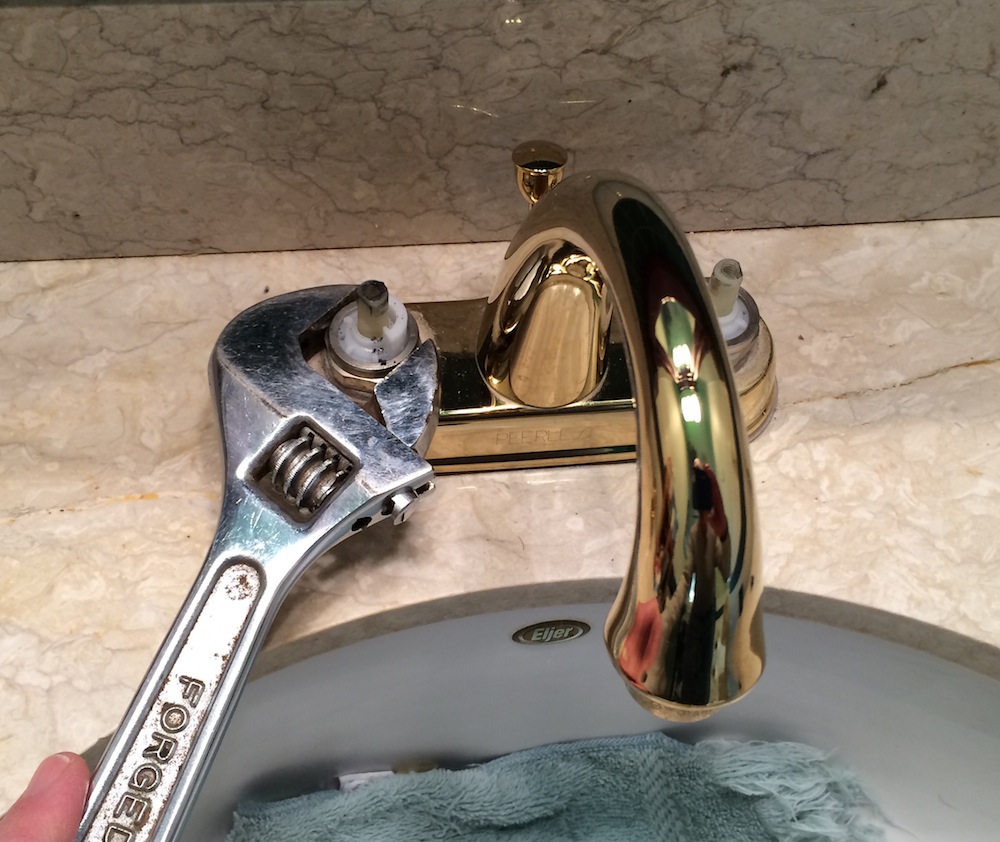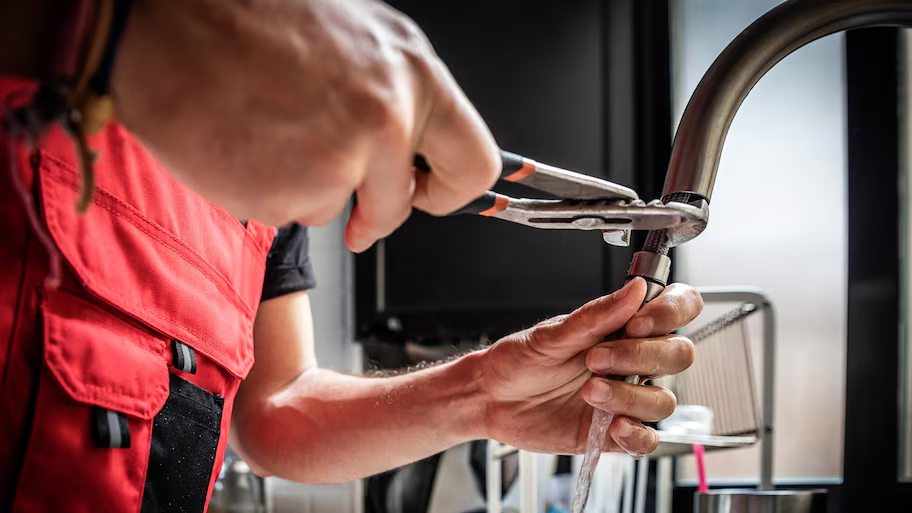How do you feel in relation to Why It's Important to Fix Leaky Faucets?

Trickling faucets may feel like a small hassle, but their effect surpasses just the aggravation of the noise. From drainage to incurring unneeded financial prices and health and wellness threats, ignoring a leaking faucet can result in various effects. In this write-up, we'll look into why it's crucial to address this typical home concern quickly and efficiently.
Waste of Water
Environmental Effect
Leaking faucets contribute dramatically to water wastage. According to the Environmental Protection Agency (EPA), a solitary tap leaking at one drip per second can lose more than 3,000 gallons of water each year. This not just stress water sources but also affects ecological communities and wild animals dependent on them.
Step-by-Step Guide to Fixing a Dripping Tap
Devices Needed
Before attempting to deal with a leaking faucet, collect the required tools, consisting of a flexible wrench, screwdrivers, replacement parts (such as washers or cartridges), and plumber's tape.
Usual Faucet Issues and Their Solutions
Recognize the kind of tap and the certain concern creating the drip. Typical troubles consist of worn-out washers, rusty valve seats, or malfunctioning O-rings. Describe maker directions or on-line tutorials for step-by-step advice on repair services.
Financial Costs
Boosted Water Bills
Beyond the ecological impact, dripping faucets can blow up water expenses considerably. The accumulated wastefulness gradually equates into higher utility expenditures, which might have been prevented with prompt repairs.
Potential Property Damages
Furthermore, long term trickling can cause damage to fixtures and surfaces surrounding the tap. Water build-up can cause discoloration, rust, and even architectural issues if left neglected, resulting in added repair service costs.
Health and wellness Concerns
Mold And Mildew and Mildew Growth
The constant existence of moisture from a leaking faucet creates an excellent atmosphere for mold and mold development. These fungis not just jeopardize interior air quality but also posture health and wellness dangers, particularly for people with breathing problems or allergies.
Waterborne Illness
Stagnant water in trickling faucets can come to be a breeding ground for bacteria and various other pathogens, raising the risk of waterborne conditions. Contaminants such as Legionella germs grow in stationary water, potentially resulting in severe diseases when ingested or breathed in.
Do it yourself vs. Professional Repair
Advantages and disadvantages of DIY Fixing
While some may try to take care of a leaking faucet themselves, do it yourself repair work include their very own collection of challenges. Without proper knowledge and tools, DIY attempts can aggravate the problem or cause incomplete repair work, extending the problem.
Advantages of Employing a Professional Plumber
Hiring a professional plumber ensures that the underlying cause of the trickling faucet is dealt with efficiently. Plumbing technicians possess the knowledge and equipment to detect and repair tap problems efficiently, conserving time and minimizing the threat of further damages.
Environmental Obligation
Specific Contribution to Conservation
Taking obligation for fixing dripping faucets straightens with more comprehensive efforts towards water preservation and environmental sustainability. Every person's actions collectively make a substantial impact on maintaining precious resources.
Sustainable Living Practices
By prioritizing timely fixings and adopting water-saving habits, people contribute to sustainable living techniques that profit both existing and future generations.
Safety nets
Routine Upkeep Tips
To stop dripping faucets, carry out routine upkeep such as cleaning aerators, inspecting for leaks, and changing worn-out components quickly. Additionally, consider setting up water-saving devices or updating to much more reliable fixtures.
Relevance of Prompt Fixes
Addressing leaking taps as soon as they're seen avoids additional water wastefulness and potential damages, ultimately saving both water and money in the future.
Impact on Residential Property Worth
Perception of Well-Maintained Home
Preserving a property in good condition, including dealing with maintenance issues like dripping taps, improves its viewed value and desirability among possible customers or occupants.
Influence on Resale Value
Characteristics with well-maintained plumbing components, consisting of faucets, command greater resale values in the property market. Dealing with trickling faucets can contribute to a positive impact during home assessments and arrangements.
Verdict
Attending to a trickling faucet surpasses plain benefit; it's a crucial step towards preserving water, reducing monetary expenses, and guarding wellness and residential property. Whether with DIY repair services or professional help, acting to repair leaking faucets is a little yet impactful method to advertise liable stewardship of sources and add to a healthier, a lot more sustainable future.
How to Fix a Leaky Faucet: Step-by-Step Repair Guide
A leaky faucet may seem like a simple annoyance, but if it's not fixed promptly, that leak could cost hundreds to potentially thousands. From water damage to mold, mildew, and high water bills, even a tiny leak can be catastrophic if left unattended. Damage like this can even affect the overall value of your home, so it's important to take the right approach for leaky faucet repair. You may need the help of a plumber in some cases, but we've got a few tips you can try on how to fix a leaky faucet before calling the pros.
Four Faucet Types
When you're learning how to fix a leaky faucet, the first step is knowing what kind of faucet you're working with! There are four common types.
Cartridge Faucets
Cartridge faucets come in one- or two-handled varieties. In one-handled cartridge faucets, hot and cold water combines in a single cartridge. In the two-handled versions, hot and cold water are controlled separately and mixed in the faucet.
Ball Faucets
Ball faucets have a single lever you push up and down to adjust the pressure and rotate to change the temperature. A slotted metal ball controls the amount of water allowed into the spout.
Compression Washer Faucets
They're the oldest type of faucet, but they're still used in many homes — especially older ones. Compression faucets have two separate handles that, when turned, raise or lower the washer that seals a water valve. This valve stops water from flowing through the faucet when it is turned off.
Disc Faucets
Disc faucets rarely need to be repaired due to their maintenance-free design. The water flow is controlled by two discs — the upper one raises and lowers against a fixed lower disc, creating a watertight seal. If your disc faucet starts leaking, you may need to replace the seals or clean residue buildup from the inlets.
Fixing a Leaky Faucet
Step 1: Turn Off the Water
Whether you're learning how to fix a leaky bathtub faucet or how to fix a leaky kitchen faucet, always turn off the water supply to your working area when you're fixing a leak. The last thing you want is a flood added to your list of things to fix.
Look for the shutoff valves below your sink or around the tub and turn them clockwise to stop the water flow. If your faucet doesn't have shutoff valves, you may need to turn off the water for the whole house. Check to make sure it's off by turning the faucet on. If nothing comes out, you're ready to start the repair.
Step 2: Take Apart the Faucet
How you disassemble your faucet depends on the type of fixture you have. You can use a flathead screwdriver to remove the caps on top of the handle or handles for cartridge and compression faucets. Inside, you should see handle screws. Unscrew these with a screwdriver to remove the handle.
Disc- and ball-style faucets will typically have an inlet screw near the handle, and removing that will reveal the interior of the faucet.
Detach the Valve Stem
For cartridge- and compression-style faucets, you'll see the inner valve stem or cartridge once you remove the faucet handles. If you have a compression faucet, unscrew the brass valve stem. If you have a cartridge faucet, pull out the cartridge. If your cartridge has been in place for a while, it may require some tools or extra force to remove it due to mineral deposits.
Examine and Replace Parts
Once you've removed the parts, check them out to confirm what needs to be replaced. You may see corroded rubber washers, O-rings, stems, or cartridges. On a ball-style faucet, check the seats and springs for damage.
If you need to repair a leaky disc faucet, check the inlet and seals on the lower disc.
Once you determine what parts must be replaced, visit your local hardware store. Bring the damaged parts with you to ensure you can purchase the correct components to replace them.
Clean Valves and Faucet Cavity
If you've removed a stem or cartridge, you may notice mineral buildup in the faucet's threads. Use white vinegar to clean the valve seat by soaking it for a few minutes, then scrub it away with a soft toothbrush and rinse with warm water. You can also clean the interior of the faucet in the same way.
Reassemble the Faucet
Once your faucet is cleaned and the required parts have been replaced, it's time to reassemble it. Put the pieces back together and slowly turn the water supply back on. Doing this slowly is crucial because too much initial water pressure can damage the new hardware you've just installed.
https://homewarranty.firstam.com/blog/how-to-fix-leaky-faucet

I ran across that entry about Why Are My Faucets Dripping (And Can I Fix It Myself)? while browsing the web. Enjoyed our blog? Please quickly share it. Let others find it. We truly appreciate your readership.